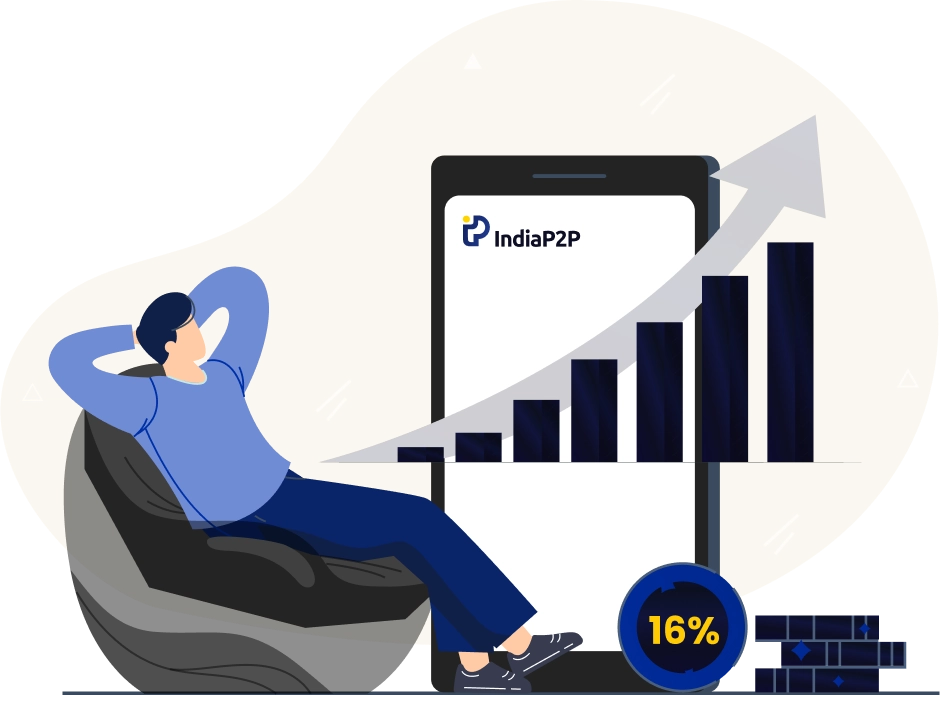Looking for Monthly Income? Here's How Lending Plans Can Help You Earn Passively

The idea of receiving regular monthly income is appealing to many. Whether it’s to manage expenses, support early retirement, or build passive income, monthly return plans offer a convenient path. In this post, we’re only talking about regulated investment and lending options. It’s important for users to carefully assess whether a financial opportunity falls under the oversight of regulatory bodies such as the Reserve Bank of India (RBI) or the Securities and Exchange Board of India (SEBI). While unregulated options—like invoice discounting, digital gold, unlisted NCDs, or fractional real estate—might appear attractive, they do not offer the same investor protections or grievance redressal mechanisms that regulated avenues do.
Monthly return lending plans are financial options where you lend a lump sum and receive payouts every month. These payouts may include interest, part of the principal, or both. Some plans return your entire principal at the end of the term, while others repay it in parts monthly- like EMIs in reverse. The key idea is to provide a steady monthly cash flow, whether to meet living expenses or reinvest.
You lend your money, and in return, receive regular monthly payouts. These can come from interest earned on the amount lent, or as repayment from borrowers. Some models follow a reducing balance method—each monthly return includes part of your principal—while others repay the entire principal at maturity.
Among regulated fixed return options, fixed deposits with banks or NBFCs continue to be a popular choice. These monthly interest lending schemes pay out a set amount each month, while the principal stays locked until maturity. As of now, FD rates range between 4% to 7.1% per annum depending on the bank and duration. Another example is non-convertible debentures (NCDs) issued by corporates, which may also offer regular interest payments. While returns are higher, they carry more risk and are only recommended if listed and issued under SEBI regulations.
Fixed return lending plans like these work well for those seeking predictability. You know exactly how much you’ll receive each month, making them suitable for retired individuals or anyone relying on regular payouts to manage expenses. However, they may not keep pace with inflation, and premature withdrawal often comes with penalties or reduced returns.
On the other side are variable return lending options. These don’t offer guaranteed monthly payouts but can still result in regular income depending on how borrowers or markets perform. Peer-to-peer (P2P) lending platforms are a good example. These platforms allow you to lend small amounts to many individual borrowers who repay in monthly installments. These repayments include both interest and a portion of the principal. While this structure allows for regular monthly cash flows, P2P platforms do not market fixed monthly income, because borrower repayments may sometimes be delayed or missed. However, the ability to easily diversify across multiple borrowers helps smooth overall returns and reduce the impact of individual defaults. P2P lending is regulated by the RBI, and platforms must follow operational and disclosure norms, which offer some degree of oversight and safety.
There are also market-linked mutual fund options that allow you to select a monthly income payout, though the amount and frequency can vary depending on the fund’s performance. Hybrid mutual funds or short-term debt funds may include such features. These are regulated by SEBI, and though they don’t offer guaranteed returns, they come with standard investor protections.
Similarly, Real Estate Investment Trusts (REITs), which pool money to invest in rental properties, often provide dividend-like payouts. While not always monthly, they offer periodic cash flows based on rental income from commercial properties. Again, these are regulated and listed instruments under SEBI.
Variable return options can offer potentially higher income, and some may adjust better to inflation over time. But they require careful selection, a degree of financial literacy, and sometimes active monitoring. They may not suit someone who needs predictable returns or is averse to risk.
To summarise, fixed return options like bank FDs and listed NCDs are great for predictable income, while variable return options like P2P lending or mutual fund income plans can offer higher potential returns but require greater involvement and risk tolerance. Some monthly return plans return your entire capital at the end, while others pay back a portion of it each month, reducing your exposure to end-of-term risks.
Regardless of the type you choose, it is crucial to ensure the plan is regulated. Investing or lending through entities outside the RBI or SEBI framework can expose you to significant risks without recourse. Many unregulated products—like invoice discounting through apps, fractional real estate, digital gold purchases, or unlisted corporate bonds—may seem innovative or rewarding but lack basic safeguards, including transparent pricing, disclosures, and complaint resolution channels.
Monthly return lending plans—whether fixed or variable—can help generate passive monthly income if chosen wisely. By focusing on regulated options, understanding your risk appetite, and diversifying your exposure, you can build a dependable source of monthly returns without compromising on safety.




